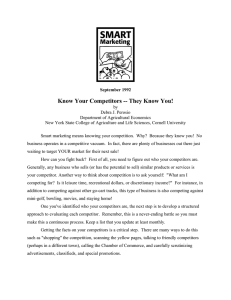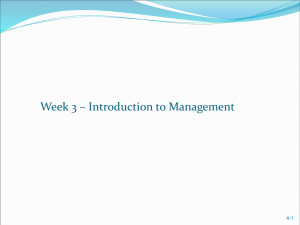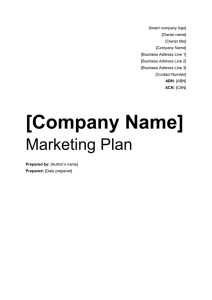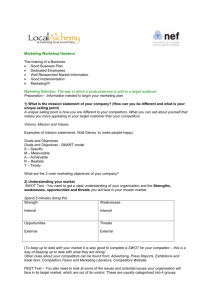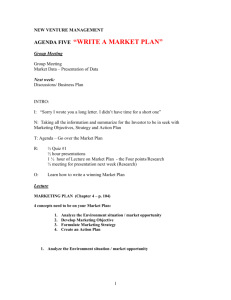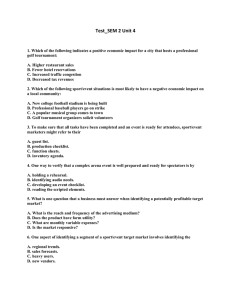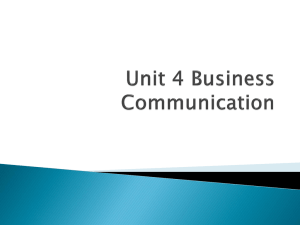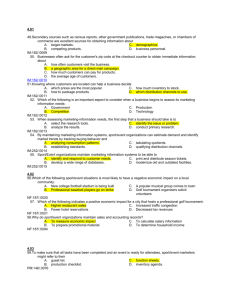the competitive market
advertisement
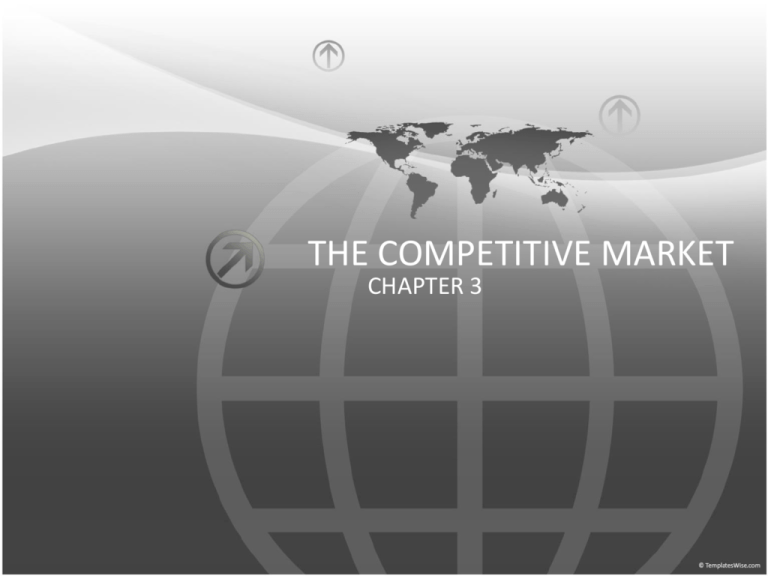
THE COMPETITIVE MARKET CHAPTER 3 COMPETITION • Does competition affect business decisions? Using your references provide details to support your answer. • How is competition defined? What makes individuals competitive? How is Apple Competitive? List all the ways Macs are competitive against PC Identify using a ven-diagram determine differences and similarities What makes Mac presents itself in a competitive way? COMPETITION IN THE AUTOMOBILE MARKET LETS COMPARE CARS Conducting a SWOT Analysis • SWOT ANALYSIS • Identifying internal strengths (S) and weaknesses (W) and also examining external opportunities (O) and threats (T). STRENGHTHS WEAKNESSES PRODUCTION COST MARKETING SKILLS IMAGE FINACIAL RESOURCES TECHNOLOGY INTERNAL OPPORTUNITY THREATS SOCIAL DEMOGRAPHICS ECONOMIC COMPETITIVE EXTERNAL IKEA SWOT ANALYSIS READ THE FOLLOWING CASE STUDY AND ANSWER THE FOLLOWING QUESTIONS COMPETITIVE ADVANTAGE Competitive advantage is a set of unique features of a company and its products that are perceived by the target market as significant and or superior to the competition. Exists when a company is able to deliver the same benefit as competitors but at a lower cost, or deliver benefits that exceed those of competing companies. THREE TYPES OF COMPETITIVE ADVANTAGE I. COST – being the low-cost competitor in an industry while maintaining satisfactory profit margins and a positive perception of product and company. II. PRODUCT/SERVICE DIFFERENTIATION – the provision of something that is unique and valuable to buyers beyond simply offering a lower price than the competitor. III. NICHE COMPETITIVE ADVANTAGE – The advantage achieved when a company seeks to target and serve effectively a small segment of the market. BUILDING A SUSTAINABLE COMPETITIVE ADVANTAGE Sources of Competitive Advantage Cost Product / Service Differentiation $ A vs. B vs. C Niche Strategy TO CREATE SUSTAINABLE COMPETITIVE ADVANTAGE, DO NOT COPY SOMEONE ELSE, BUILD YOUR OWN SUSTAINABLE COMPETITIVE ADVANTAGES ® SUSTAINABLE COMPETITIVE ADVANTAGES - methods used to keep customers in spite of the competition. Strategies include: 1. Developing a Unique Selling Proposition (USP): the one thing a company’s product has that competing companies don’t have and will not develop 2. Lowering Production Costs: using other sources to save costs (i.e. building a plant in another country with lower resource costs) 3. Servicing a Niche Market: providing a product/service for a small market, keeping competitors out of that market 4. Creating Customer Loyalty: when consumer develops strong relationship with product or retailer NON-SUSTAINABLE COMPETITIVE ADVANTAGES Can be used by competitors to shift sales in their direction Strategies used: 1. Promotion ¢ Create top-of-the-mind awareness: consumer most likely thinks about one brand of product/service before thinking about any other 2. Placement ¢ Category Killers: big retail stores that specialize in specific product categories (i.e. books, hardware or pet supplies) 3. Quality 4. Benefits of Use 5. Price 6. Design Features Service Competition Other businesses offer value-added services: activities performed to support the sale of a product or other services Service businesses compete with one another by attempting to gain a competitive advantage using: Convenience Degree of service § Selection § Reputation Price Competitive Market Competitive Market: • • consists of specific types of products as well as the companies that manufacture these products The amount of money consumers spend annually on these specific products defines the size of the market in dollars Competitive Market Market Share: the percentage that one company’s product takes of the total dollars spent by consumers on products within a specific market category. (see Figure 3.23 on page 110) Market Segment: parts of the market defined by a specific characteristic 2 Ways to Increase Market Share: Increase size of the overall market Take away sales from its competitors Market Share What do theses charts illustrate? What could have made the differences in quarters? How would you increase your market share if you were Apple? COMPETING IN INTERNATIONAL MARKET PROMOTION F Some methods are regulated differently in various countries F Cultural differences must be considered F Restrictions are placed on promoting certain products F Media censorship of advertising may be restrictive PLACEMENT Form joint ventures to combine resources to make or sell a specific product in another country QUALITY Choose a country that would consider your product highquality and that has no competitors COMPETING IN INTERNATIONAL MARKETS BENEFITS OF USE Can be expensive if there are no competitors PRICING Marketers must know tariff rates (taxes placed on good being imported into a country in order to protect the local industries from too much foreign competition Landed cost: includes shipping costs and currency exchange, as well as tariff rates DESIGN Marketers need to research what the importing country’s design requirements and standards are of the product they are selling
